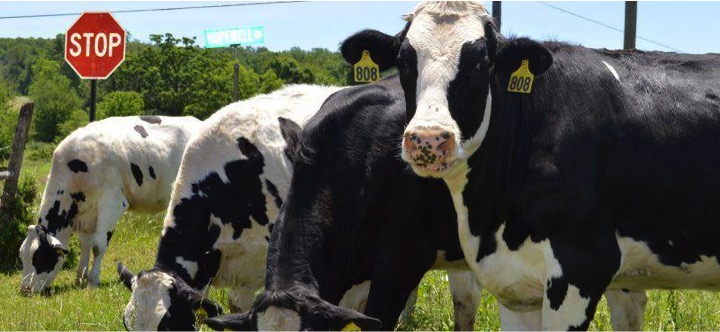The industry must accept the facts.
Dairy cows do emit methane through belching, flatulence and manure decomposition. But are they the big offenders that many would like the general public to believe?
Working with a notion that stated elimination of the entire U.S. dairy herd would lessen climate change, USDA partnered with researchers at Virginia Tech in 2020 to test the hypothesis.
The research team created three scenarios to look at different assumptions on how and why to remove dairy cattle from the U.S. food production system. The scenarios included ways to repurpose land previously used for dairy to other uses.
One intervening issue in eliminating all dairy is the compensation (or lack of) of the essential nutrition contained in milk and other dairy products. Just as our dairy farmers have to balance nutrition for their cows weighed against feed costs, the nutrition that comes naturally from dairy products must be weighed against any negative environmental impacts that might exist.
It is truly a simplification to think that removing all dairy cows from production would somehow reduce greenhouse gases enough to make any significant improvement to the negatives associated with climate change. In fact, in order to be fair to the dairy industry, there has to be some comparison with other industries that are also associated with the emissions.
Let’s look at the transportation sector.
According to the research, milk production contributes 1.3% of all greenhouse gases while transportation as an industry contributes about 28%. All of agriculture contributes 10%. The generation of electricity contributes about 27%.
These figures are important for all of us in the dairy industry so we can communicate effectively with those who blame dairy (and agriculture) for climate change issues.
To get back to a discussion of greenhouse gas emission vs. nutrients provided, Americans get more than half of their needed calcium and vitamin D from milk, cheese and yogurt. In addition, milk products contribute substantially to human needs for protein, vitamin A, several of the B vitamins, and several minerals.
According to Katie Brown of the National Dairy Council in February 2021, “The efficiency through which dairy provides us with these nutrients would not be possible without cows.”
More broadly, it is not easy to obtain the essential nutrients found in dairy products from any other individual food source, plus there may be increased costs associated with the production of that source.
What were the overall study results?
Researchers found that if the dairy herd was removed from the U.S., greenhouse gas emissions would only be reduced by 0.7% while seriously reducing nutrient availability as noted above. Each scenario presented different alternatives, but the results were the same — dairy is not a primary contributor to greenhouse gas emissions.
The researchers also examined what they call the “downstream” effects of removing all dairy herds, specifically fertilizer production and land use. Considering these scenarios, the increased production of synthetic fertilizers would actually increase the emission of greenhouse gases. And we would no longer have land used to pasture dairy cows or to grow nutritious feed for them.
The dairy industry also has not received credit for the improvements it has made toward better environmental stewardship.
Farmers’ willingness to invest in better management of their land, air and water resources has lessened dairy’s negative environmental impact. It now takes 30% less water and 21% less land for a combined 19% smaller carbon footprint to produce a gallon of milk, according to Dairy Management Inc.
These better management practices are coupled with the cow’s ability to consume plants and byproducts not fit for human consumption, turning them into nutrient-rich milk.
The answer to the question I posed at the beginning of this column is a resounding “No!” Dairy is not the major offender of greenhouse gas emissions that the general public seems to believe.
Please join me, the board and staff in celebrating efforts made by American dairy to do its part to protect our environment.
Soyrce : Lancaster farming June 19th 2023 by Carol hardbarger

